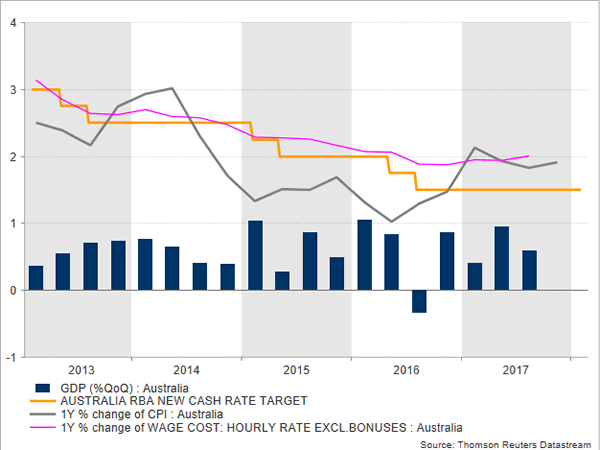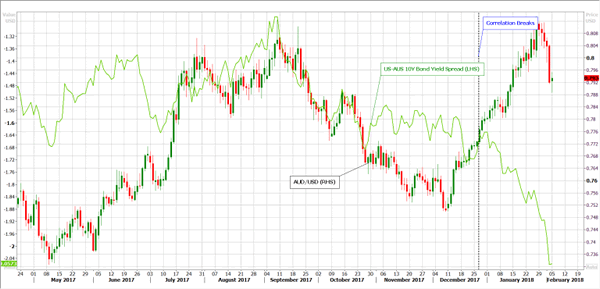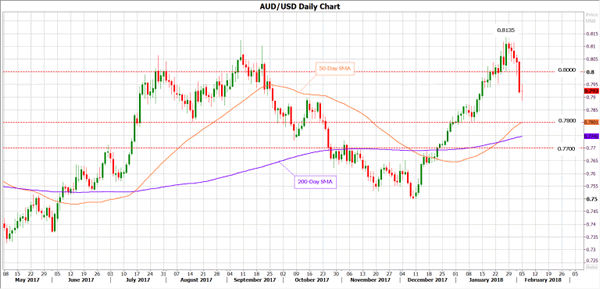The Reserve Bank of Australia will meet for its first interest rate decision for 2018 on Tuesday but a rate hike will be probably off the table. Although the economy recorded solid growth and consumer and business surveys improved since December’s policy meeting, household spending remained a risk, while an appreciating currency signals that this is likely not the right moment to tighten monetary policy, at least this time.
In the third quarter of 2017 private business and public investments enhanced the strength of the Australian economy, sending GDP growth to 2.8% on a yearly basis from 1.8% seen in the preceding quarter. The labor market also showed some improvement, with the number of employees rising strongly by almost 97,000 between November and December and the wage growth inching up to 2.2% y/y. However, this is not enough evidence to convince policymakers that a rate hike is appropriate as inflation continues to hold below the RBA’s range target of 2-3.0% at 1.9%, missing repeatedly analysts’ projections. Besides that, increased borrowing costs will squeeze consumption even further at times when homeowners are struggling to meet their debt obligations. According to recent estimates by Digital Finance Analytics, more than 924,000 or 30.0% of the households are under mortgage stress.

A stronger Australian dollar could also refrain policymakers from delivering higher interest rates. However, this seems not to be a reason to blame Australian policies but instead external factors including the strengthening US dollar and improved global conditions. Over the last two months, the dollar’s weakness helped aussie/dollar to rally by 6.5% despite shrinking US-Australian bond yields spreads. Moreover, commodities exported from Australia such as iron, copper, and gold also saw significant gains from a tumbling greenback during this period providing substantial support to the aussie. Last but not least, economic growth in China added further impetus to the aussie rally as Australia’s biggest export partner grew faster than anticipated, beating government’s targets for 2017.

Therefore, considering the above, the RBA is more likely to leave rates at a record low of 1.5% for the sixteenth consecutive month, giving no boost to aussie/dollar unless the central bank alters its currency language in the rate decision statement following the anouncment at 0330 GMT. In case the RBA echoes its worries about the exchange rate, aussie/dollar could slip back to the 0.78 key-level and in the worst scenario break below the 200-day moving average to retest the 0.77 handle. On the other hand, hawkish messages could erase Friday’s losses and drive the pair up to 0.80 with scope to reach the three-year high of 0.8135. Prior the rate announcement, retail sales and trade data out of Australia might have the potential to shake the market. A speech by the RBA Governor, Philip Lowe, at the A50 Australian Economic Forum on Thursday and the monetary statement due on Friday will be next in focus.













